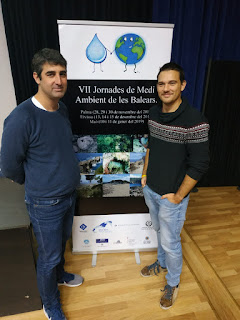 The research by A. Rotger Vallespir had make the news here and here. Andreu showed how the scale pattern on the head of the snake Hemorrhois hippocrepis changes across individuals and it can be used as a fingerprint to track individual and assess their life-history. The free available software APHIS, developped by the GEDA in 2015, can be used to process the images. Andreu's research was first presented at the VII Conference on Balearic Environment early this month.
The research by A. Rotger Vallespir had make the news here and here. Andreu showed how the scale pattern on the head of the snake Hemorrhois hippocrepis changes across individuals and it can be used as a fingerprint to track individual and assess their life-history. The free available software APHIS, developped by the GEDA in 2015, can be used to process the images. Andreu's research was first presented at the VII Conference on Balearic Environment early this month.You can find the IMEDEA press release here












